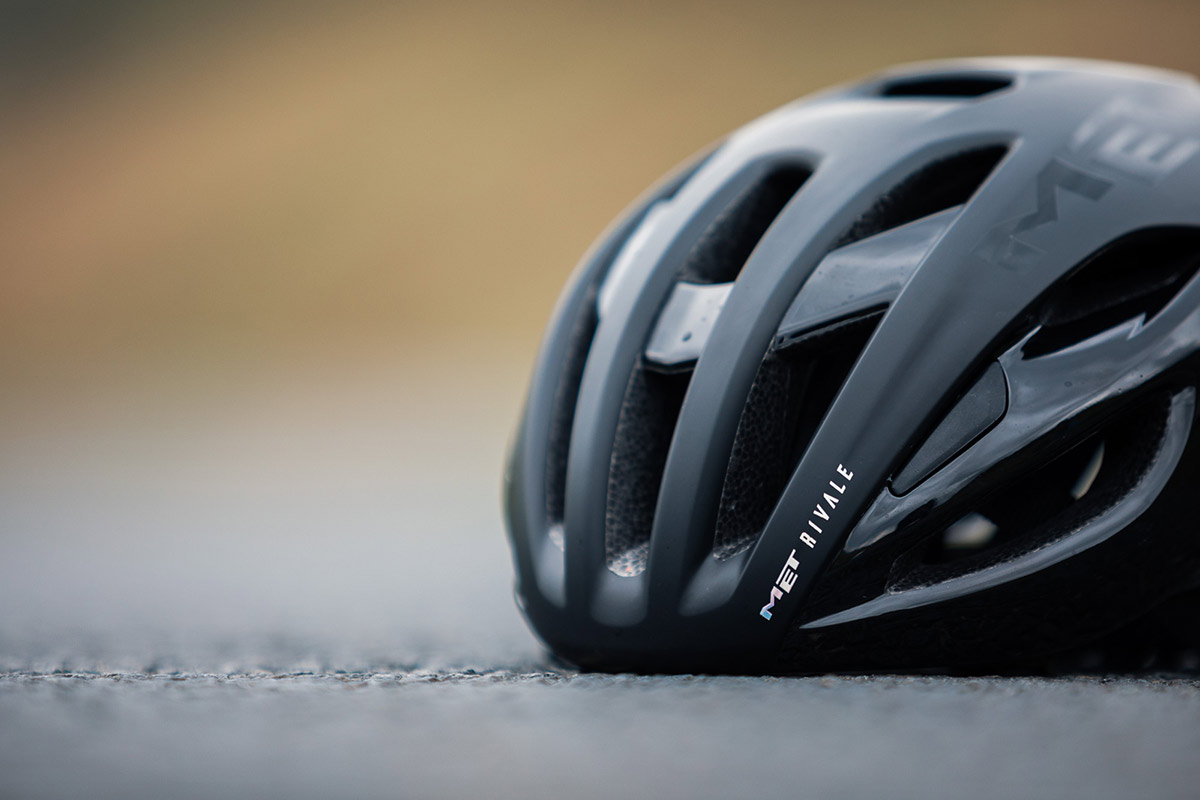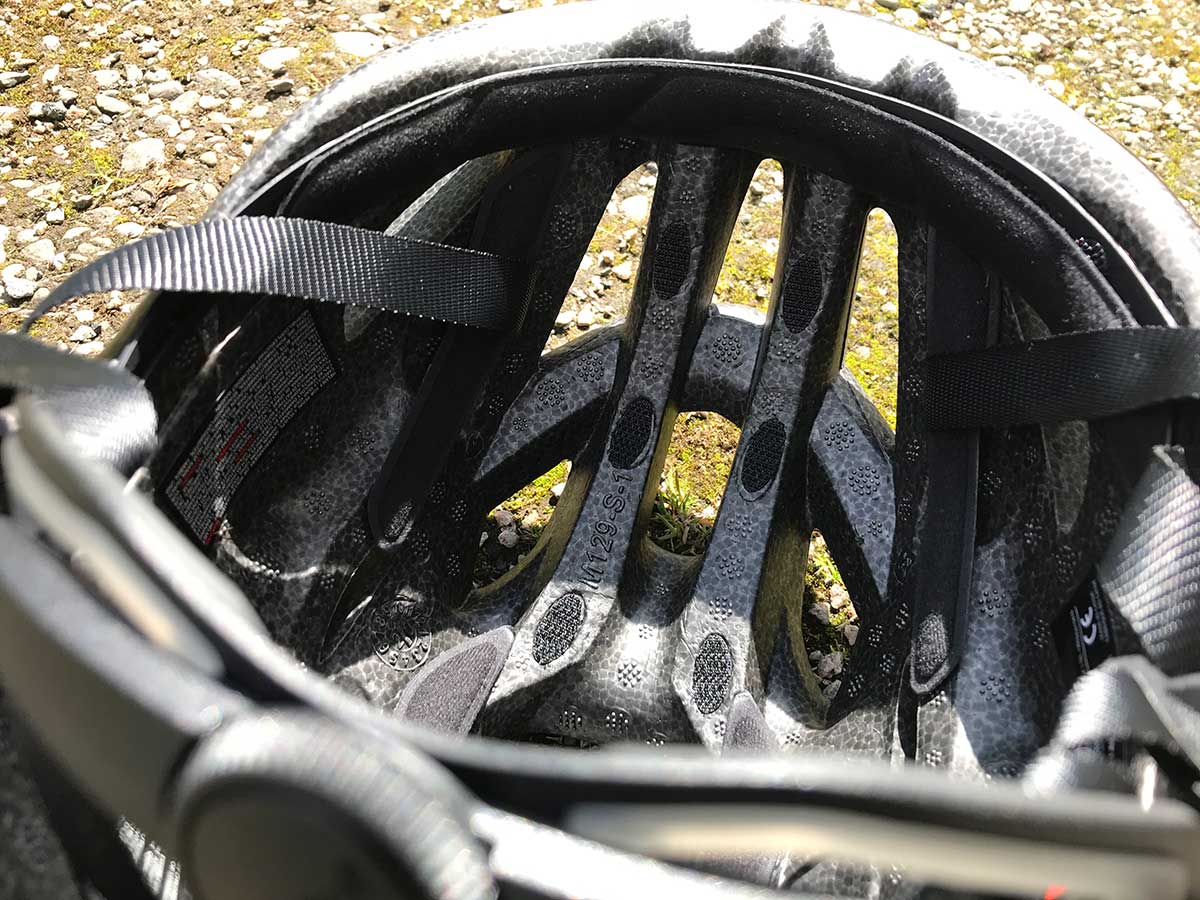Update: In the original posting of this review, I noted the presence of some pressure points associated with tightening of the 360° head belt. I wrote that I expected the MIPS version of the Rivale helmet would not suffer this issue. MET have since sent me the MET Rivale MIPS to compare fit between the MIPS and non-MIPS versions. See the updated review here.
The MET Rivale is their mid-range road helmet, nestled between the Vinci MIPS and the ultra-ventilated Trenta helmets, priced at 130€. It actually shares the shape of their top-end aero road helmet, the Manta MIPS. This one is more of an all-rounder, though, with significantly more ventilation. We got this lightweight, reasonably priced road helmet in to check out the fit, comfort and coverage.
Feature Image by Finlay Anderson
Review: MET Rivale Road Helmet

First up, the MET Rivale we tested does not include a MIPS liner. The Italian brand do offer the MET Rivale MIPS helmet for just 20€ more at 150€. We would always, always, recommend that riders chose a MIPS option over a helmet lacking in any rotational impact protection. Why? They are just safer (by around 10%)! If your budget can stretch to a helmet that offers protection against rotation-induced concussion injuries, then get one.

Anyway, back to the MET Rivale we have on test. I got the small recommended for head circumferences of 52cm to 56cm. I sit smack bang in the middle of that range at 54cm. My Park Tool scales weighed it at 212g; that’s a bonus 8g lighter than the 220g claimed weight, for the weight weenies who care.
Arguably the most important feature of any helmet is the fit, and so this is what much of this review will focus on. While the fit and adjustability of this helmet is very good (not quite excellent), the comfort levels unfortunately came nowhere near those provided by the MET Manta MIPS we tested recently. More on that later…
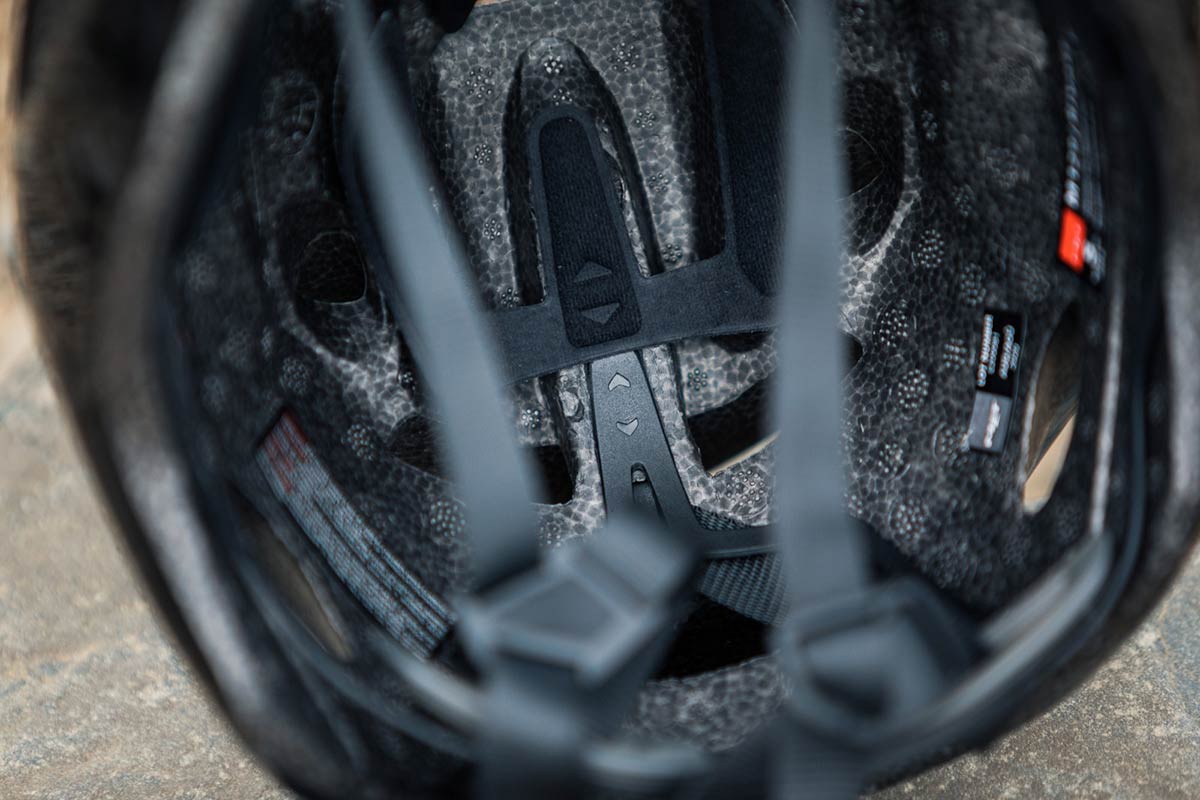
The MET Rivale gets a 360° head belt tightened at the rear by a ponytail-compatible retention system. The vertical placement of that retention system can be adjusted to sit in one of three positions. While the availability of such an adjustment is welcome, I personally struggled to find a position that was 100% comfortable. In each of the three positions, upon tightening the retention system at the rear, I noticed significant pressure points above each ear. Update: I noted the same pressure points with the MET Rivale MIPS helmet, too.
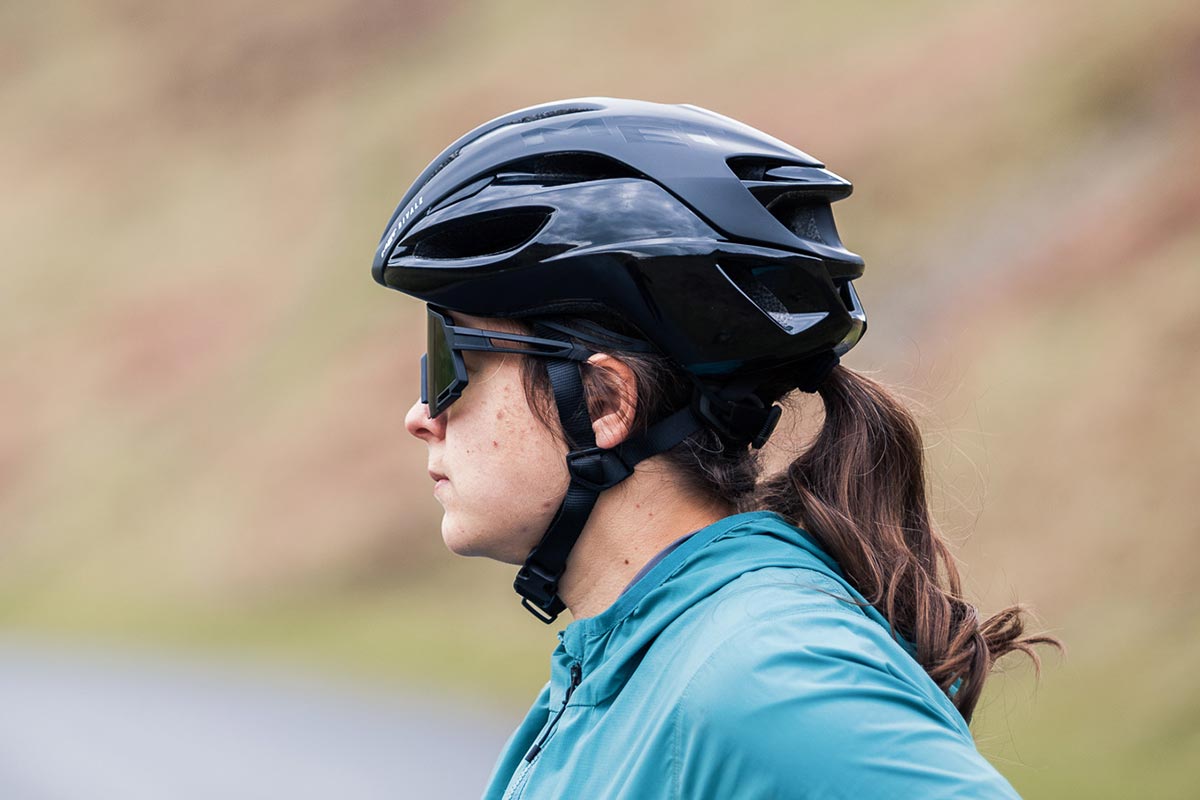
I also noticed a pressure point at the front of my head, slightly offset from center. Assuming I don’t have too asymmetrical a head (no comments, please), I removed the comfort liner in that region to look for any inconsistencies underneath.
Notice that the oval-shaped velcro tabs sit within dedicated recessed portions of the EPS. Some of the velcro tabs don’t sit perfectly within their recessed housing, resulting in a slightly uneven surface for the comfort liner to sit on. This, I think is the reason for the pressure point at the front of my head. This is an issue you’d be unlikely to encounter on the MET Rivale MIPS as the comfort liner sticks directly to the MIPS liner which is always going to be perfectly flat.
Update: I have since tested the MET Rivale MIPS helmet. As I expected, the presence of the aforementioned pressure point was a little less noticeable, but still present nevertheless. I have had to conclude that the shape of the front of my head is a little asymmetrical, and this is accentuated by the lack of a MIPS liner.
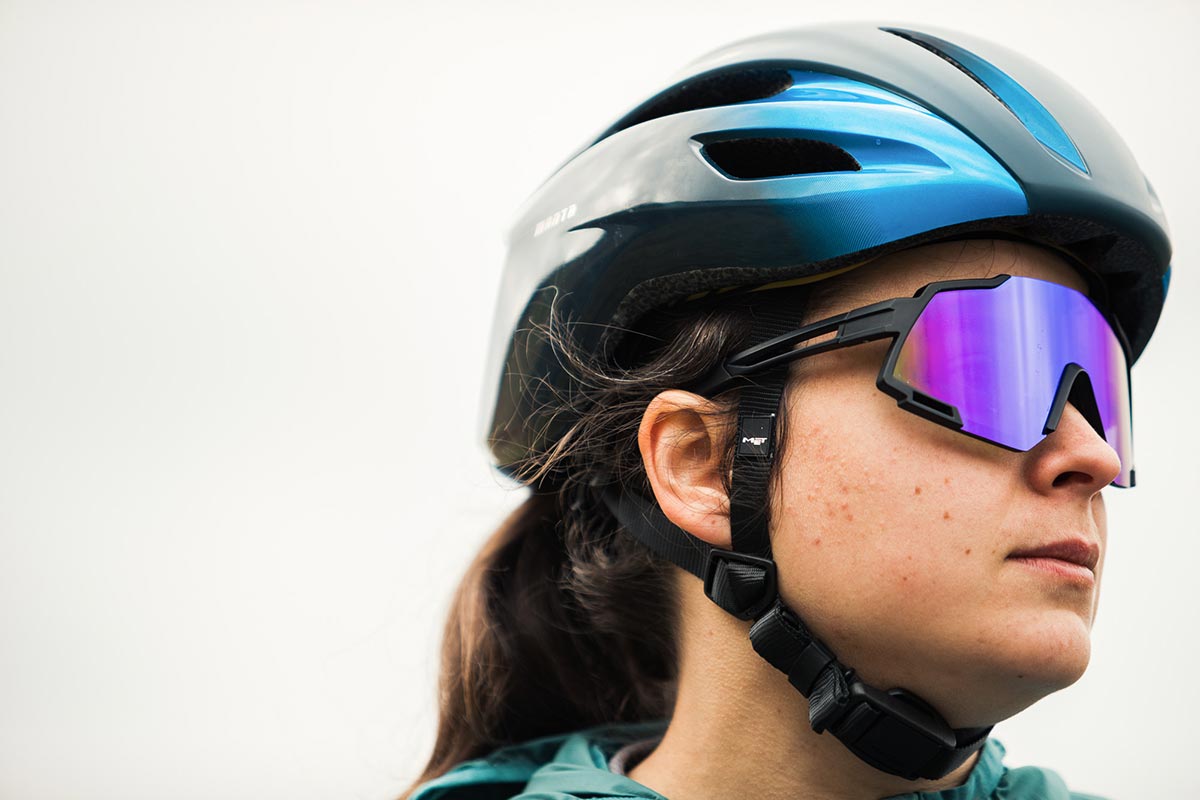
In contrast, over tightening the MET Manta MIPS retention system highlighted no particular pressure points, resulting in a really comfortable fit. The more expensive, more aerodynamic road helmet would certainly be my preference. Especially, as I live in the UK where it rarely gets very warm so ventilation isn’t super high on the list of priorities.
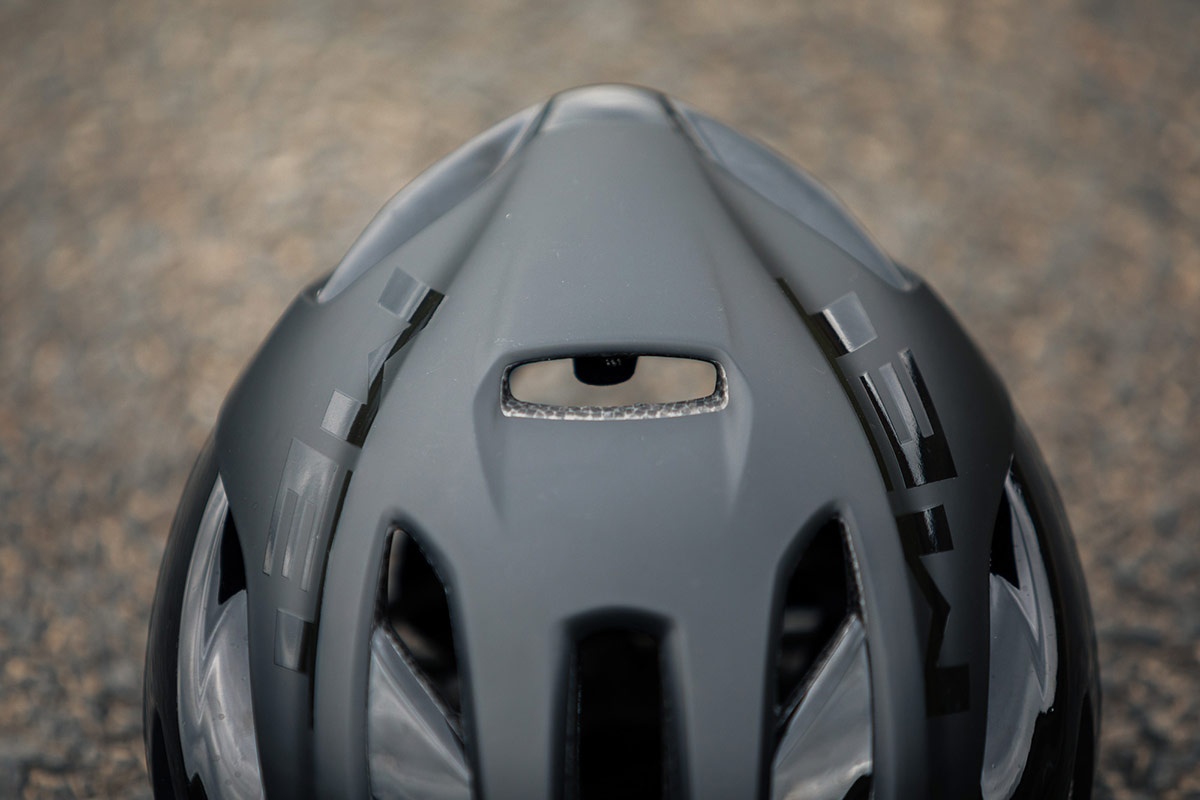
That said, the ventilation offered by the MET Rivale is good. There are ten elongated vents at the front of the helmet with another smaller one placed at the highest point. This one opens up into a cavity underneath the helmet, allowing air to flow over the top of the skull, pulling hot air out of two rear-facing vents.

There are of course seven rear facing vents in total but only two of these have a direct inlet from which air flows through the body of the helmet.
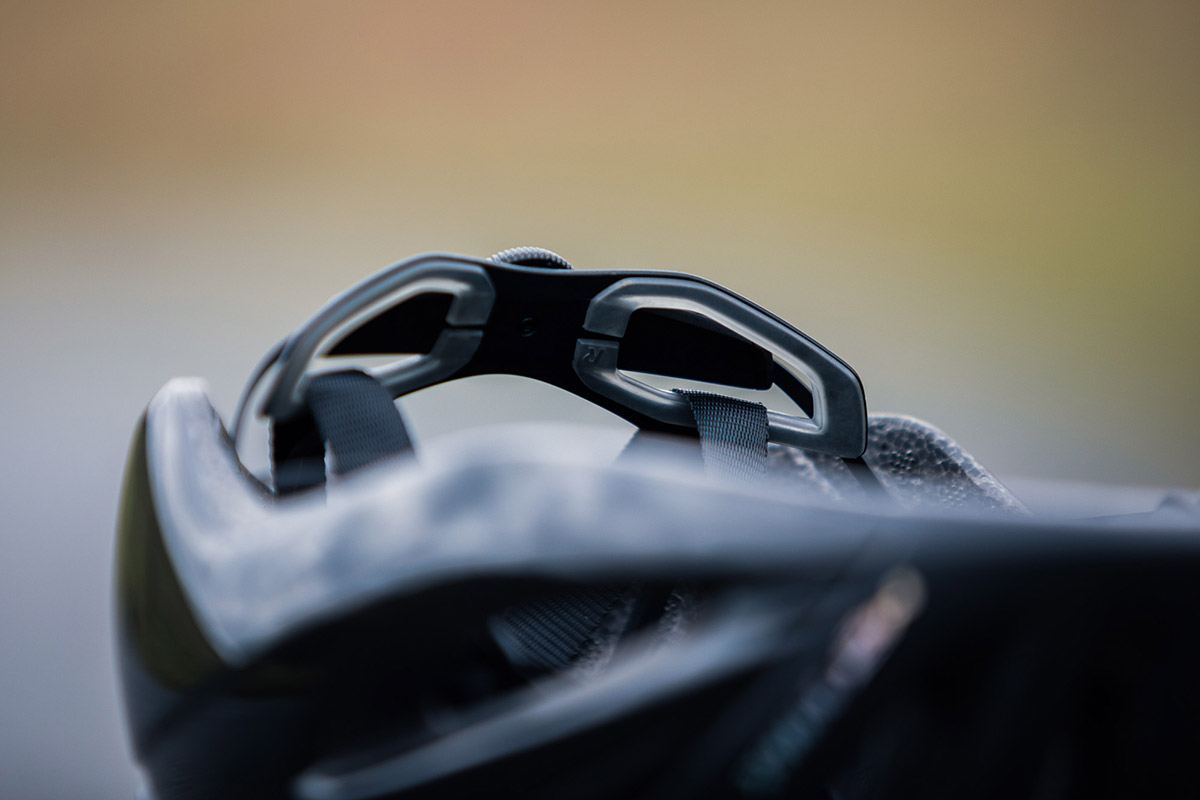
The MET Rivale retention system isn’t quite as adjustable as the one seen on the Manta MIPS. While the aero road helmet allows riders to move the cups further apart or closer to one another, the cups on the MET Rivale sit in a fixed position. That said, they do feature rubberized panels that should provide extra comfort for riders with little to no hair.
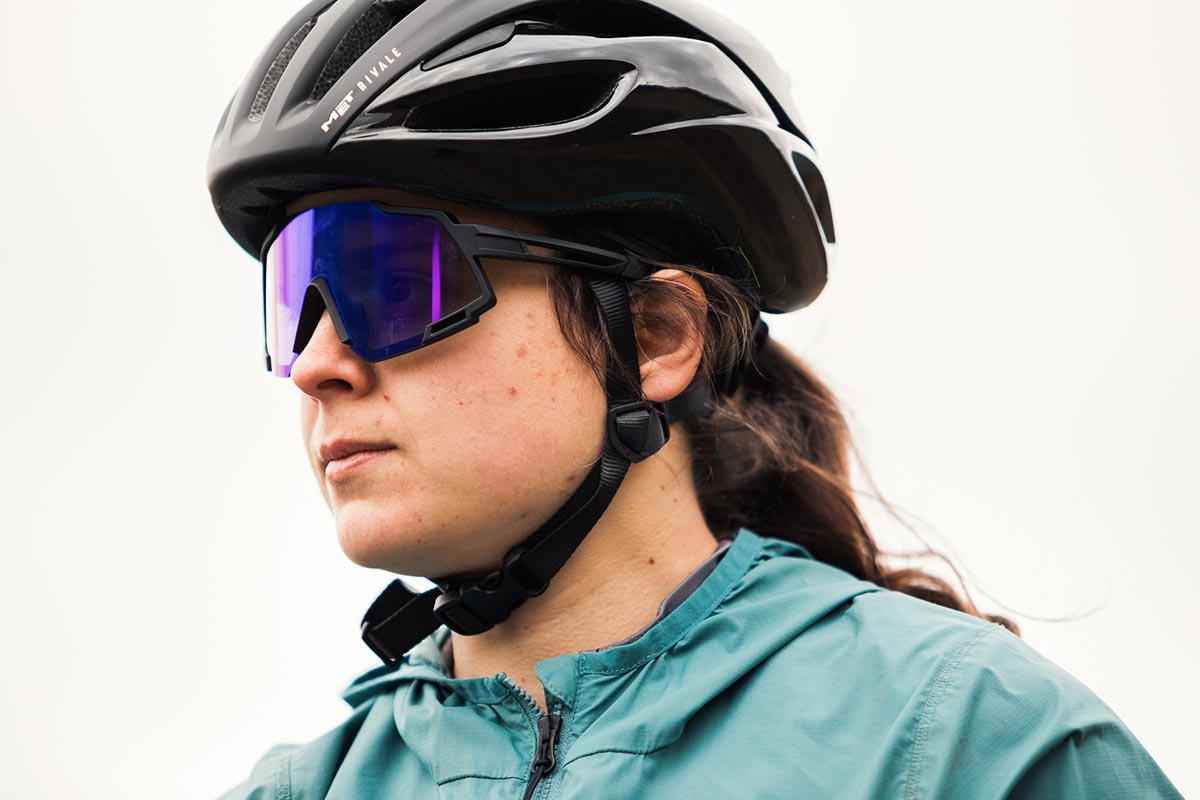
Finally, we get to the chin strap. This is adjustable in just about every way. You can alter the overall length, as well as perfect the length of the straps that sit in front of and behind your ear; a very important feature in any helmet. The straps fasten with a standard plastic buckle.
Can we recommend the MET Rivale?

Yes, but not without reservation. While it is a lightweight, well-ventilated helmet offering reasonable coverage for the grams, it certainly isn’t the most comfortable road helmet we’ve tested. The more expensive MET Manta MIPS beats it hands down in that department. However, if you’re not looking for an aero road helmet, we’d recommend the Rivale MIPS next. It’s safer, cheaper, and the presence of the MIPS liner likely negates some of the issues with comfort we experienced with the non-MIPS counterpart tested here.
Pricing & Availability
Both MET Rivale helmets are available in sizes S (52-56cm), M (56-58cm) and L (58-61cm). They are CE certified according to AS/NZS and US standards.
The MET Rivale is priced at 130€ / £120 / CAD$200. The MET Rivale MIPS weighs just 20g more at 250g in medium, and will set you back 150€ / £140 / US$180 / CAD$250 / AUS$250. Availability is expected around mid-October.
Update: Quality Bicycle Products is now the official distributor for MET & Bluegrass Helmets in North America.
